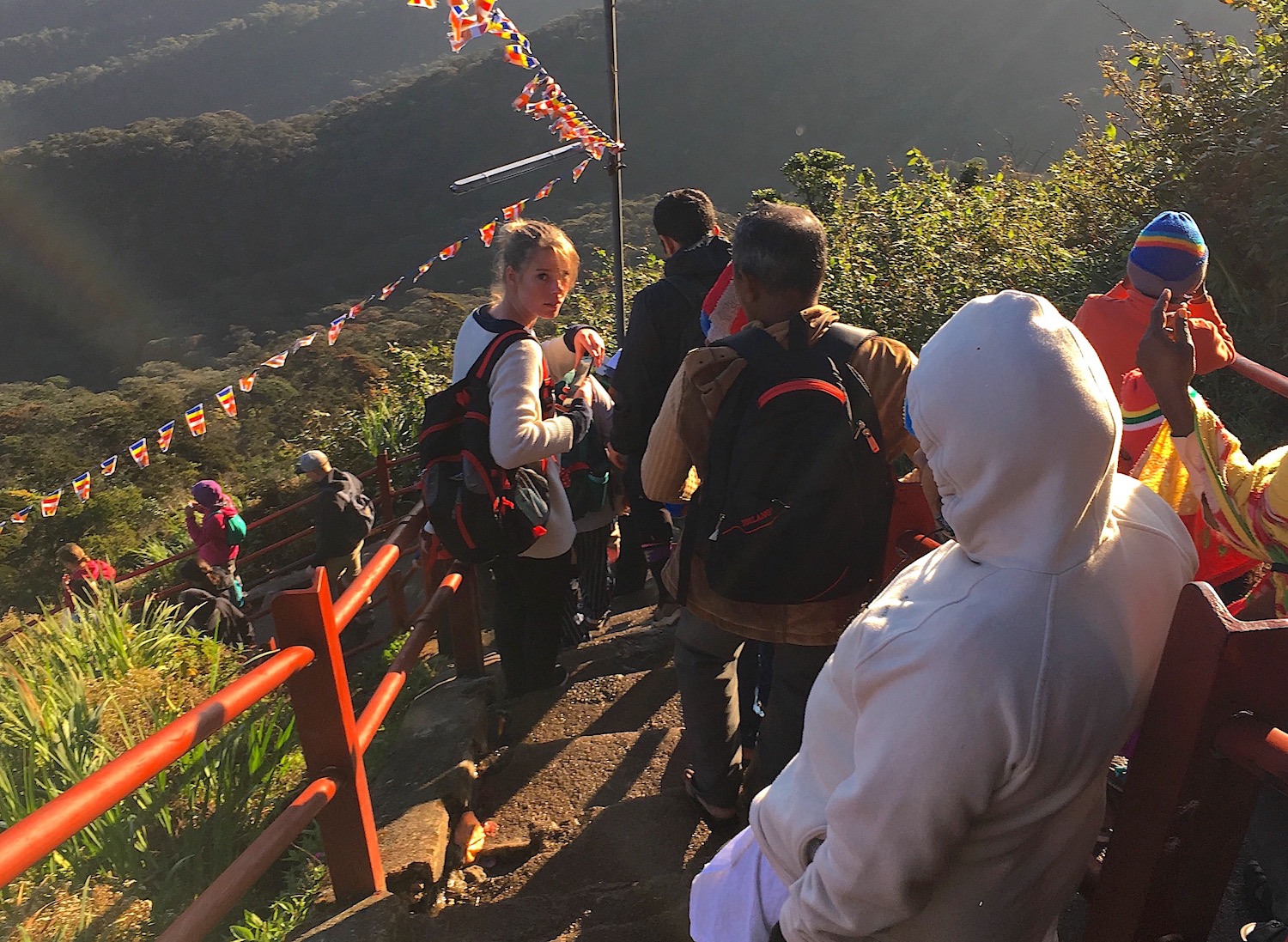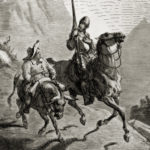Adam’s Peak is the second-highest mountain in Sri Lanka, and (since reaching the peak is a pilgrimage ritual for adherents of the country’s four biggest religions) it is by far the most popular for hikers. Local Buddhists believe a rock on the 7,359-foot summit bears the footprint of Lord Buddha; Hindus think the footprint belongs to Shiva; Christians and Muslims claim it bears the mark of Adam’s first step after being exiled from the Garden of Eden.
Religious traditions aside, most travelers simply enjoy the challenge of making the six-hour, 3000-foot night-ascent to catch the sunrise, and spiritual devotion isn’t a prerequisite. Dalhousie, the trailhead-town at the foot of the massive conical mountain, is geared toward pilgrims and trekkers; its avenues are lined with guesthouses, as well as souvenir stands selling stocking hats, religious knick-knacks, and cheap toys.
I elected to climb Adam’s Peak because it’s a time-honored travel ritual in that part of Sri Lanka, and because it sounded like a fun challenge. Tradition dictates that you start the climb about an hour or two after midnight – both to ensure a view of the sunrise on the way down, and to avoid the withering heat of the day. I left my guesthouse a little after 2am, and headed for the carefully maintained concrete path, which is said to contain 5500 steps along a steep four-mile trail.
The physical challenge of the climb was offset by the visual weirdness of the path itself. Weak electric lamps lined the path, precluding the need for a flashlight, and in the dim light the occasional Buddhist and Hindu shrine-statues made the landscape look like a creepy, haunted diorama. One of the Buddhist shrines featured a bronze bell you could ring as a blessing; not sure what its exact purpose was, I rang it because the hiker in front of me rang it (and I donated a 1000-rupee note to the shrine’s monks for the same reason).
The lower half of the trail was lined with tea vendors, sweets shops, and souvenir kiosks selling religious tokens, toys, and cold-weather gear (and no doubt many a puffy stocking hat is kept by Sri Lankan pilgrims as a keepsake of their chilly night-ascent in this otherwise balmy country). The trail started to bottleneck toward the summit, as climbers began to tire in the higher altitude, and to mix in with pilgrims who’d departed earlier in the night and were now on their way down.
Some of the younger Sri Lankans made the ascent in flip-flop sandals; some of the elderly pilgrims went barefoot. There were a lot of switchbacks near the peak, and at one point, when the summit temple-complex still hadn’t appeared after a sharp bend, a group of young schoolchildren burst into tears.
Near the top I stopped in a tent and got a 100-rupee cup of coffee, which was so warm and rejuvenating that I got back in line and ordered another. When I reached the end of the path I spent about an hour hanging out on the summit, which was so scenic (and crowded) that I forgot to look for the footprint of the Buddha/Shiva/Adam when I took off my shoes and walked through the main shrine.
My favorite part of the climb proved to be the descent, which was breathtakingly gorgeous as the stars dimmed and the sun began to rise over the sprawling valley below. Prayer flags fluttered alongside the path, and I decided to shoot a time-lapse video of pilgrims ascending and descending – if for no reason beyond the fact that this allowed me to sit still and savor the intensifying glow of the sunrise. (How often does one make a point of sitting still for an hour and watching the sun come up over the horizon? Perhaps the simple ritual of witnessing such a common transitional moment is part of the point of making a pilgrimage like this.)
Sitting there, I noticed varying degrees of devotion among the Sri Lankans coming up and going down: Some people chanted hymns, others joked and posed for pictures; some brought offerings of fruit or money, others texted on their smartphones or munched on popcorn. The most satisfying aspect of climbing Adam’s Peak that night was this diverse communal energy of the hike – the fact that, despite everyone’s differing nationalities and religions and motivations and degrees of devotion, we were all engaged in the same physical act together at the same moment.
On occasion some cultural commentator will posit that travel is no longer necessary, since you can now experience the entire world on TV, or online, or on Instagram. But to me, rituals like the one that happens each night on Adam’s Peak are proof that being in there in person offers something no mediated experience can provide – the chance to see it and smell it and hear it and taste it for yourself, and to feel happily exhausted when it’s all over.
Note: “Dispatches” are short vignettes, profiles, and mini-essays written and posted from the road, often in tandem with my Instagram account. For more full-formed writing, check out my book Marco Polo Didn’t Go There, or the Essays or Stories archives on this site. I don’t host a “comments” section, but I’m happy to hear your thoughts via my Contact page.





